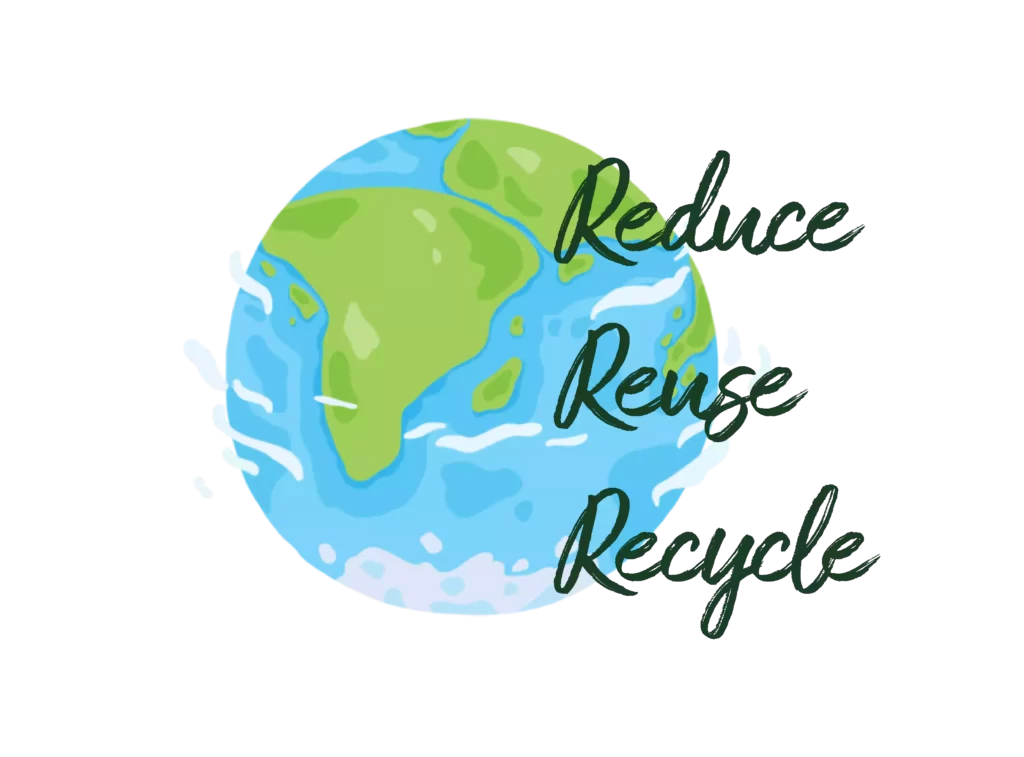The world we live in requires a conscious, sustainable slow fashion. For the Climate concerns humanity faces today from fast fashion.
Fashion started as a seasonal need and Style. Today fashion is about Consuming new trends for a moment. There is a need for a sustainable fashion movement around the world.
This is our first blog. We are working on bringing our Research and knowledge more open and transparent to everyone.
What is Sustainable Fashion?
Sustainability in fashion refers to the environmental, social, and economic impacts. And the efforts made by brands, manufacturers, and consumers to reduce these impacts.
Fast fashion adversely affects the Environment and Human life, especially in developing countries. It contributes to water and air pollution and resource depletion.
The fast fashion industry causes various social and ethical fashion issues. Ethical concerns like sweatshops with poor working conditions, low wages, and child labor.
Fast fashion adversely affects the climate and people, especially in developing countries. It contributes to water and air pollution and resource depletion.
The fast fashion industry causes various social and ethical fashion issues. Ethical concerns like poor working conditions, low wages, and child labor.
How can consumers adopt Slow Fashion?
There are several ways that consumers can support slow fashion.
Buy from sustainable brands: Look for eco-friendly brands. Brands that use Natural materials and have ethical labor practices to reduce climate impact.
Repair and Repurpose your clothes: Caring for them can help them last longer, so you don’t have to consume more.
Buy second hand: Buying vintage and secondhand clothes brands is a great sustainable practice. This reduces the impact of the environmental and social responsibility of making new clothes and supports sustainability in fashion.
Shop conscious: Consider buying fewer items. Invest in the slow fashion of high-quality pieces that will last longer.
Donate or recycle your clothes: When you no longer want or need an item of cloth. Consider donating it to a thrift store or waste Management so it can be resold, upcycled, or recycled.
These sustainable practices can help our environment. To reduce the negative impacts and create a better sustainable slow fashion.
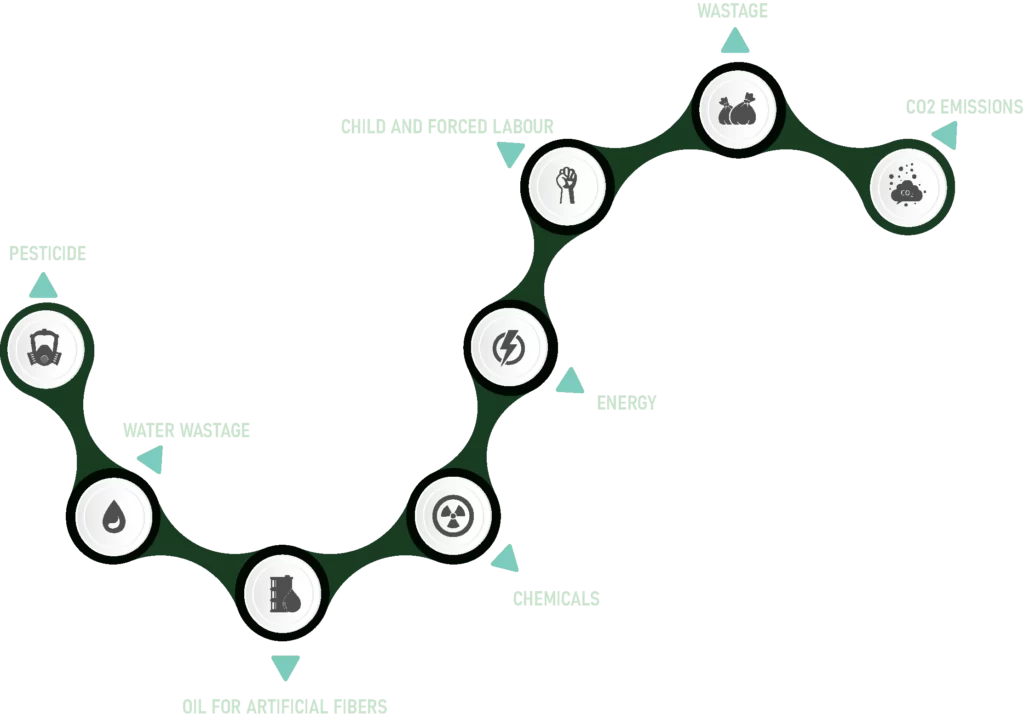
Why is sustainable fashion so important?
Sustainable fashion is important because it addresses many issues. Our fashion choices need a change. Here are a few reasons why sustainable fashion is essential.
Environmental impact
The fashion Industry contributes to pollution and resource depletion.
The cultivation of conventional cotton is a big issue. They use harmful chemicals, such as pesticides and fertilizers.
Besides natural depletion, polyester is one of the highest polluters of fossil fuels. They pollute our soil and water. Shipping and transporting goods to different continents and customers have a significant impact.
Disposing of textiles and clothes causes a substantial environmental disaster with landfills and waste mountains.
Sustainable fashion practices aim to reduce Green House Gas (GHG) by using eco-friendly materials and designing products that have a longer lifespan.
Social impact
The fashion industry carries a lot of social issues. Less-paid manufacturers, sweatshops, poor working conditions, low wages, and cheap labor exploitation for garment workers.
Ethical Fashion practices through fair wages, Health, and Safety aim to improve working conditions.
Consumer Impact
Besides the environmental and social benefits, sustainable fashion also benefits consumers. Products made from sustainable materials are more durable and long-lasting and bring value.
What are sustainable practices?
Several practices can be resourceful for environmental protection.
Use of sustainable Textiles: This includes biodegradable, recycled, or natural materials produced using sustainable methods.
Ethical fashion practices: ensure the manufacturing units are run with ethics and fair wage. A living wage is vital for sustainability. This includes supporting fair trade and ethical labor practices.
Water consumption: Water is a valuable resource, and the fashion industry is a significant consumer, especially in its industrial dyes.
Implementing water-saving bleaching and dyeing measures can reduce the industry’s impact on water resources.
Reducing Green House Gas (GHG): Implementing energy-efficient practices and using renewable energy sources can help reduce emissions. Using natural and recyclable materials.
Upcycle and Recycle: Upcycling textiles and clothes into a new product form is a great practice. Materials like trims, Buttons, and Zippers can be reused or repurposed. Recycling textile and clothing waste can reduce energy consumption to produce new materials.
Transparency: Consumers need to know where their clothes come from, who made them, and the ethics behind them.
Companies should increase transparency by disclosing their supply chains and certifications through technology. Providing digital certificates about sustainable fashion practices will help customer trust.
How to reduce GHG Emissions?
Global apparel market industry revenue will increase to approximately 2 trillion dollars by 2027. It carries a significant threat environmentally.
The apparel industry accounts for 10% of global carbon emissions per year. And remains the second most significant industrial polluter, second only to Fossil fuel. 1.6 gigatons of carbon dioxide will emit through the manufacturing and retail of Apparel by 2030.
The energy-intensive processes involved in manufacturing and processing textiles and clothing, transportation, and disposal contribute to significant greenhouse gas (GHG) emissions.
Fashion in textile Manufacturing, including the cultivation of cotton and production of synthetic fibers like polyester, and transportation contributes to Greenhouse gases like carbon dioxide, nitrous oxide, and methane. Certain chemicals in textile production, such as synthetic dyes and finishes, can also contribute to water depletion and pollution.
Fast fashion products are often designed of low qualities are discarded, leading to a large amount of textile and clothing waste. These textiles at the landfills break down and release greenhouse gases like methane as they decompose.
Understanding the process and procedure and developing a product by reducing Green House Gas emissions is very important. Using natural and organic fibers and avoiding polyester is the best reduction practice. We can reduce our carbon footprint by using more renewable energy.
Higher-quality clothing items will last longer and be less likely to end up in landfills—Upcycle and recycling of clothing through initiatives to recycle or resale.
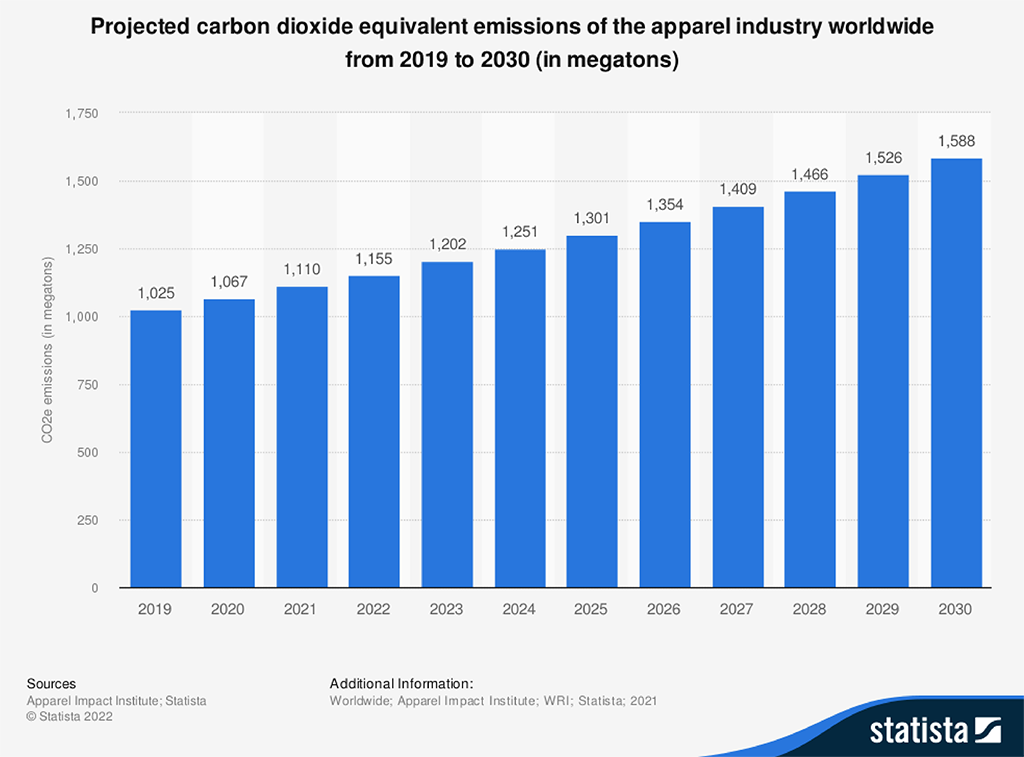
What are the ideal Sustainable Textiles?
Natural fibers
Fibers from plants or virgin resources that are biodegradable. Meaning biological processes can break them down. Some examples of natural fibers include certified organic cotton, wool, silk, and leather alternatives.
Organic materials that aim to raise awareness. They contribute to the reduced use of toxic chemicals.
Recycled Natural fibers
Natural fibers like cotton and wool can be recycled into a blend of natural fibers. We must recycle them and use them to produce newer clothes. Recycling fibers reduces the need for new raw materials and can help minimize waste.
Bamboo
Bamboo is a sustainable plant that can grow with renewables. That multiplies and requires minimal pesticides and water to thrive.
It can make various products, including sustainable clothing, towels, and bedding. But Processing bamboo with chemicals for softer material is harmful.
The demand for bamboo is leading to deforestation and greenwashing. Bamboo demand can also lead to soil depletion for our food needs.
Hemp
Hemp is a biodegradable and sustainable plant. It can break down into nature without a negative impact. It is the most versatile and renewable of all our natural sources.
It requires less water consumption, unlike cotton production. Solid, strong, durable, and can make various products, including sustainable clothing, bags, and accessories. Hemp can also improve soil health, making it an excellent crop choice for farmers.
Textiles made of sustainable fibers can help reduce the fashion industry’s environmental impact. This can support more sustainable production practices.
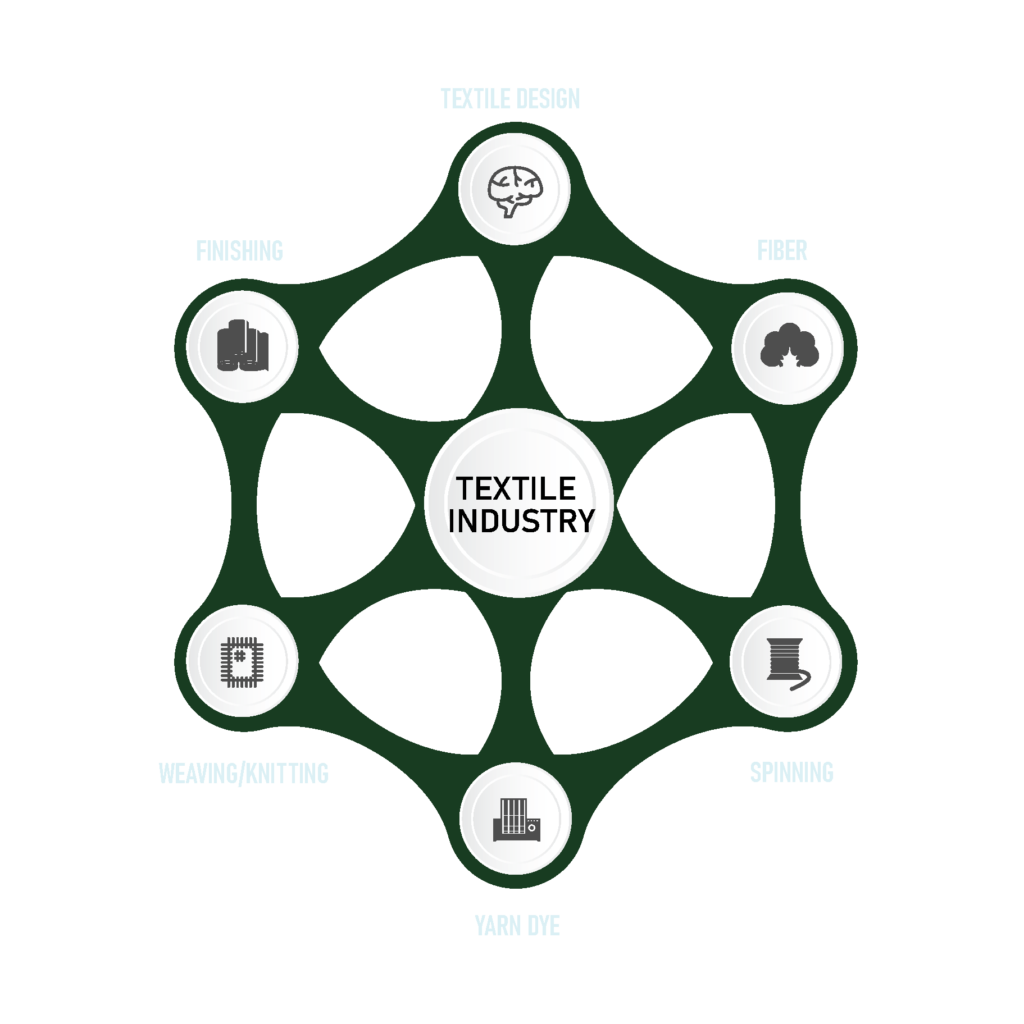
How is Cotton Fiber Essential?
Cotton is a major agricultural commodity grown in many parts of the world. It has a long history in the United States, China, India, and other countries.
Cotton remains a valuable natural resource crucial in many communities & economies. It is a versatile natural fiber used in various products. But cotton is a sensitive crop. Due to pests and weeds and to achieve more excellent yields, conventional cotton is widely grown.
The production of cotton can have negative environmental impacts. Some of the environmental challenges associated with cotton production include
Pesticide and herbicide use
Cotton production requires toxic chemicals and herbicides to control pests and weeds.
Besides environmental depletion, it can have an impact on human health. Farmer’s risk through handling the chemicals. Harmful to the consumers when it comes in contact with the skin.
Water consumption
Cotton production is a water-intensive process. The cotton industry, including industrial dyes, significantly strains local resources. Cotton cultivation is leading to water-scarce conflicts.
Soil degradation
Continuous cotton cultivation can lead to soil degradation. It will reduce soil fertility and crop yields due to the chemicals used.
Climate change
Cotton cultivation is a significant source of greenhouse gas emissions. This is due to the energy required for irrigation, synthetic fertilizers, and pesticides.
To address these challenges, some farmers adopt sustainable cotton production practices, use organic fertilizers, and implement water-saving irrigation techniques.
They are looking at crop rotations for better yields. Consumers can impact cotton production by choosing sustainable raw materials and organic cotton.
Why should we stop using polyester?
Polyester is a petroleum product and the most common fiber used in clothing. More than 50% of garments in 2021 were made from polyester.
Polyester is a synthetic material from a polymer. It is a strong and durable material overused in clothes and textiles. Polyester blends with most fibers available today with the technology.
Polyester derives from fossil fuels such as natural gas and oil. The source, the method, and the development take a lot of energy. Synthetic materials production releases carbon emissions in several stages of the manufacturing process.
Extraction and processing of fossil fuels are highly energy intensive. Transportation of materials and finished products from various supply chains releases greenhouse gas emissions.
Recycling and reusing synthetic fabrics products can help to reduce their carbon footprint and lead to an environmentally conscious slow fashion.
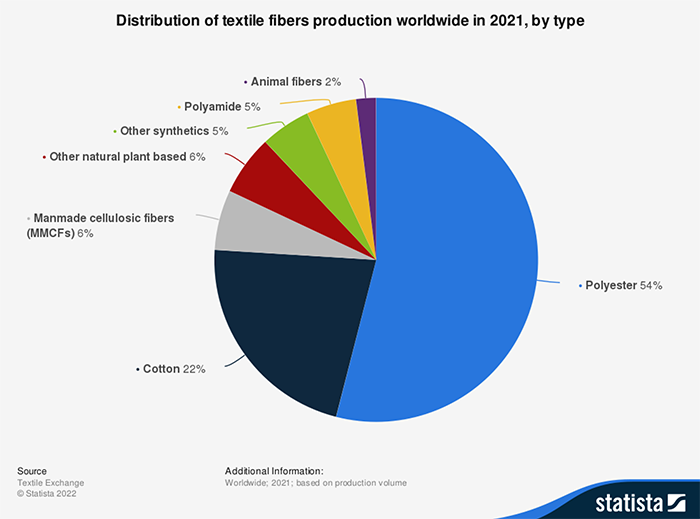
How does Cellulose deplete resources?
Man-made cellulosic fibers are developed intensively with toxic chemicals from the cellulose of plants. These are generally called viscose.
Dissolving the cellulose from the wood pulp, cotton, or hemp requires hardened treatments. This procedure produces similar qualities of natural fibers like linen, cotton, or hemp—the soft feel with moisture management.
Today, a few artificial cellulosic fibers are rayon, modal, Tencel, and lyocell. These fibers account for about 6% of current fiber production worldwide annually.
There are many environmental concerns in the production of Man-made cellulosic fibers. Water and air pollution is a significant concern besides deforestation. Due to a lack of regulations, toxic chemical processes lead to human health concerns.
There is a sustainability trend in greenwashing man-made cellulosic fibers to decrease polyester and cotton usage by many fashion companies.
Is rPET sustainable for fashion brands?
Garments made from recycled plastic bottles are very innovative. They help reduce the waste of plastic bottles instead of ending up in discards or oceans.
Turning plastic bottles into fibers for clothing also requires less energy. They are a great choice if we compare them with Polyester pet bottles.
The sustainability of these fibers depends on recycled Polyester composition and the garment lifecycle and durability. Melting plastic bottles into fiber requires a lot of energy and blends of synthetics.
Recycle polyester blends are not biodegradable as natural fibers. So it’s essential to consider circular options for clothes. Recycling pet bottles can reduce waste, but there are better solutions to recycling.
What is upcycle fashion?
Conscious upcycling is re-designing any used or unwanted clothes and textiles. Re-developing a product from the existing is better than recycling them.
The process innovates new, higher-quality products to produce unique fashion items. It consumes less energy and resources than producing new clothes. This helps reduce waste and the environmental impact of fashion production.
Upcycling is referred to as “reusing” or “repurposing.” It extends the life of clothes and textiles by reducing the demand for new clothes. Upcycling techniques such as dyeing or printing on clothes can harm the environment.
We develop upcycled garments through the deconstruction of clothes like pairs of jeans. Deconstructing the clothes and sorting the patterns create new styles and less waste. Further, we use organic dyes and printing techniques on the new styles.
What is Recycle Fashion?
Recycling takes existing clothes and textiles and breaks them down into new fiber in recycling. The new fiber can be either the original fiber or a new man-made cellulose fiber.
Recycling clothes have positive and negative effects on the environment depending upon the process. Recycling clothes can help reduce waste. It can conserve energy, helping reduce the production of new clothes.
It can have environmental impacts too. Transporting clothes to recycling facilities can contribute to pollution. The sorting, bleaching, and recycling process can consume intensive energy and resources.
Recycling clothes and textiles involve downcycling the material’s fibers through a chemical process. Then, spinning those fibers into new yarns will create a fresh blend of fabrics.
We recycle Clothes and fabrics collected with the utmost ecological integrity. These are further processed into yarn and materials to create sustainable fashion collections with digital certification for transparency.
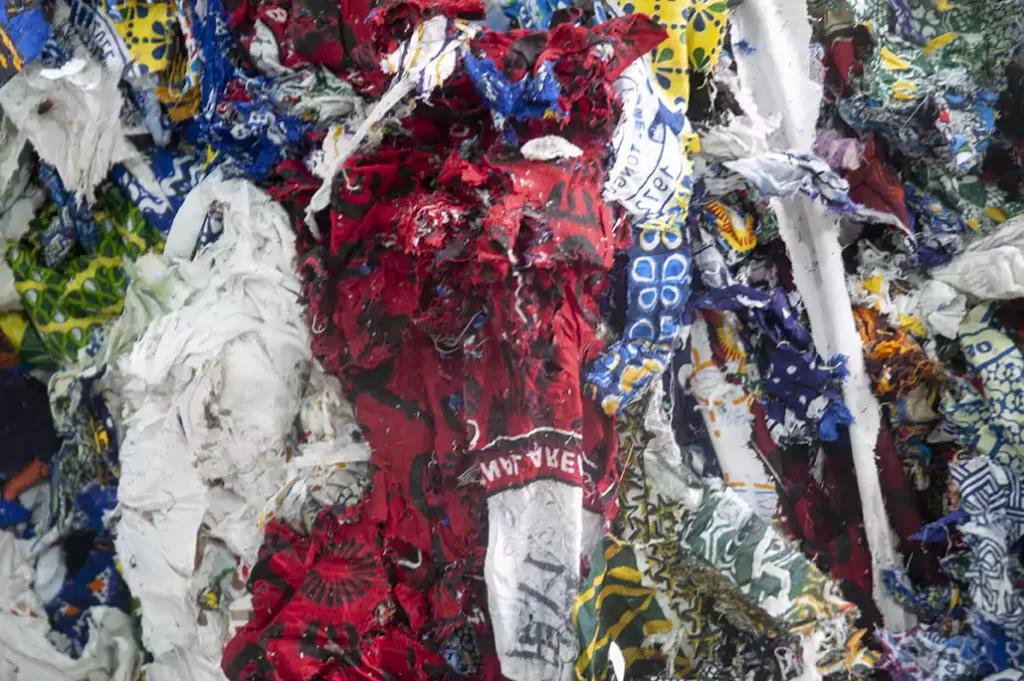
How are we a Sustainable brand?
As a Sustainable Fashion brand, we aim to build a circular fashion. That can bring self-sufficiency and net zero through Ethics, leading to a carbon-neutral brand.
A Lot of used clothing arrives in Ghana as donations from the West. Due to high import duties and low manufacturing, used clothing is a crucial trade for many. This influx of secondhand clothing affects the beaches and landfills in Ghana.
Garment waste can cause disastrous pollution. Putting a landfill has caused massive air pollution. The waste releases methane and other greenhouse gases. Polyester in clothing brands can also contribute to microplastic pollution in the seas.
We are building a supply chain to collect textile & clothing waste. The discarded garment waste of various fast fashion brands causes environmental damage in Ghana.
We collect the fast fashion brands before they end up in Ghana clothing landfills through our supply chain. We sort them as per their repurposes for upcycling and recycling with zero waste.
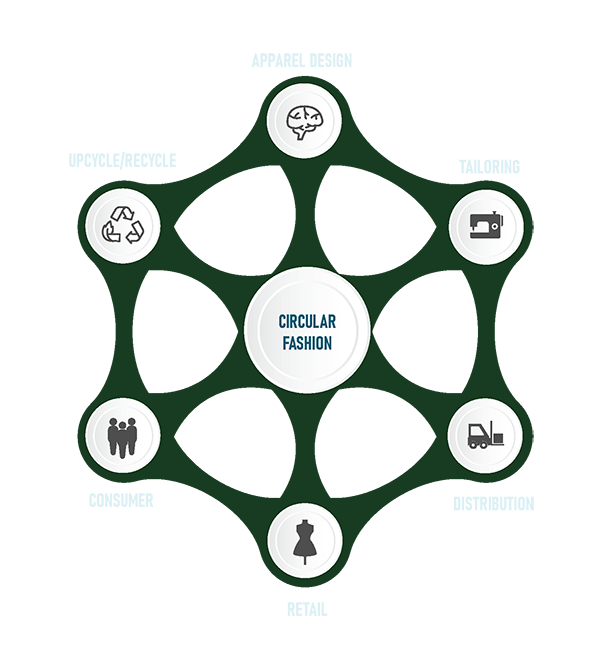
Conscious conclusion
We recycle, reuse, and re-design fast fashion Waste to develop collections of sustainable products.
Recycle: Textile materials and fast fashion Clothes into fiber material.
Reuse: Deconstruct the garments for upcycled clothes.
Re-design: Construct the panels into a new design and collection.
We also collaborate with indigenous farmers and artisans from India and West Africa.
- Cotton farmers’ for organic cotton production.
- Textile artisans, like weavers, produce Handwoven materials.
- Fabric Dyes for eco-friendly dyeing techniques on textile materials.


